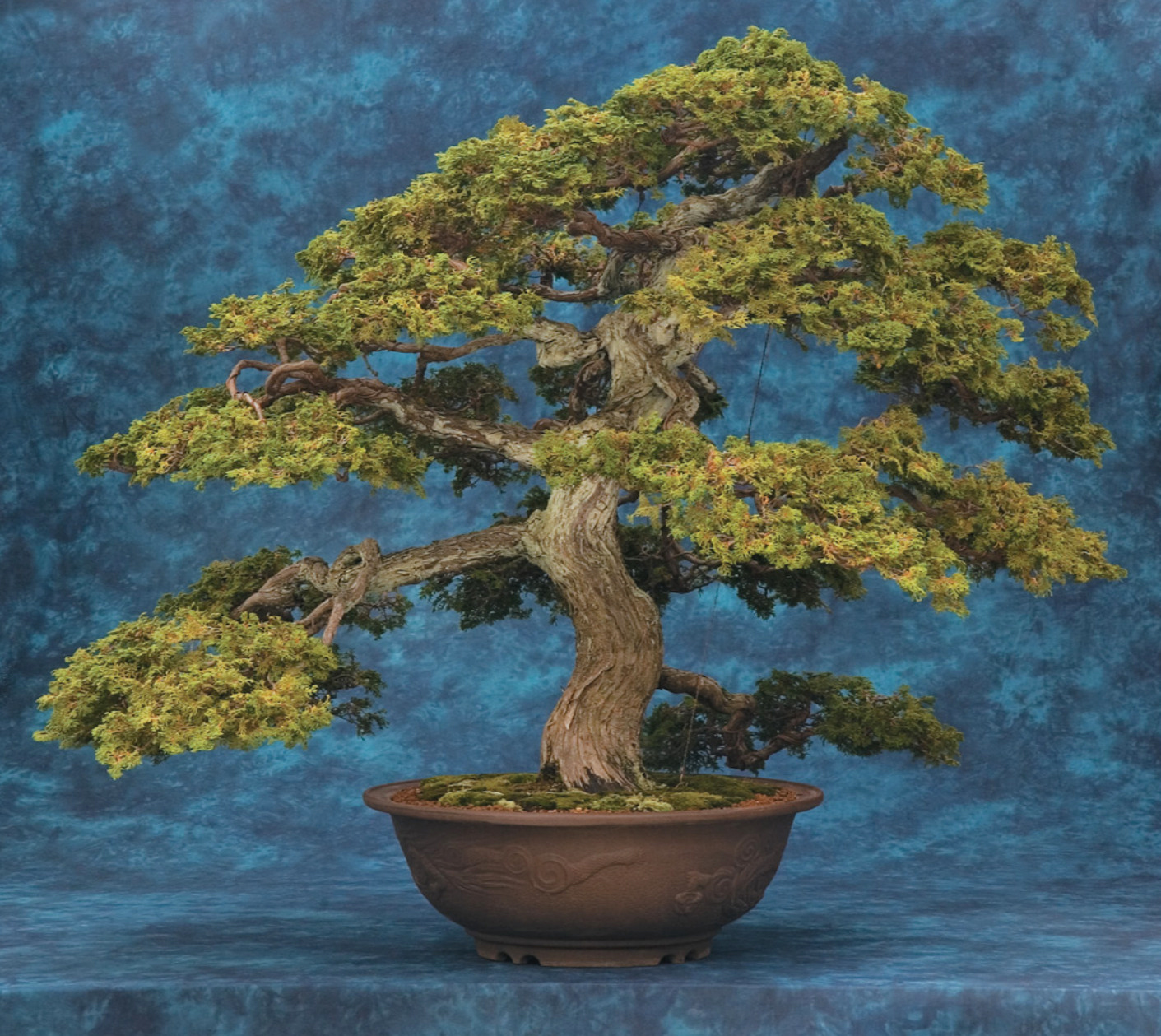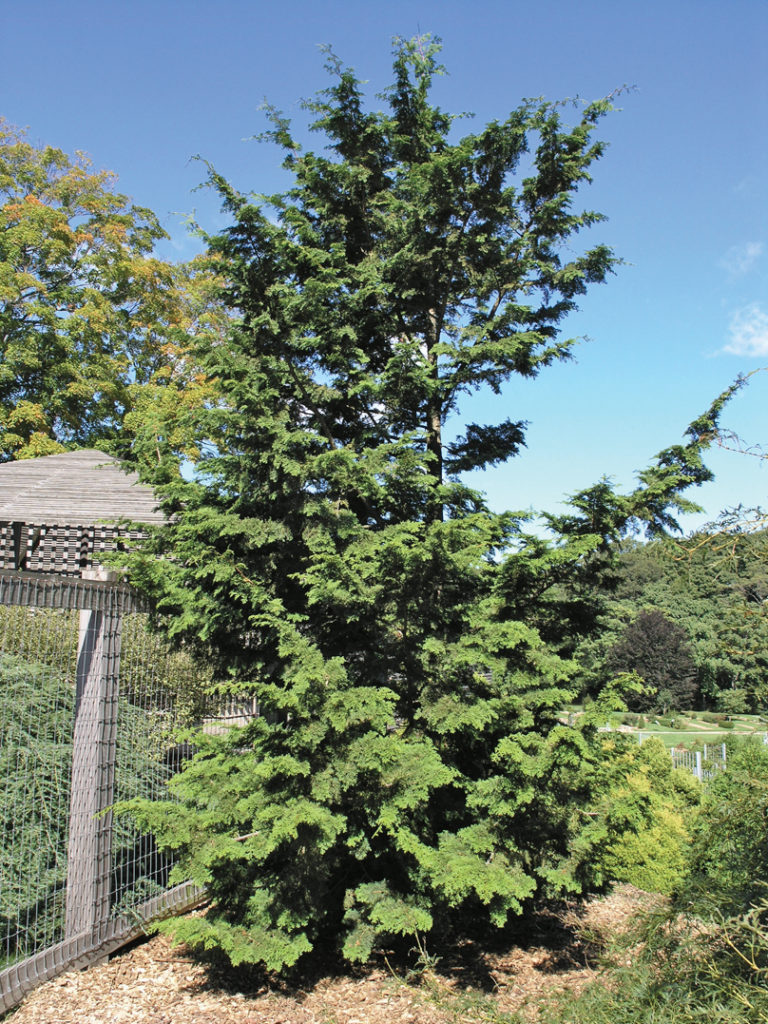
LARZ ANDERSON, BROOKLINE, M
ORIG FROM YOKOHAMA NURSERY CO., JAPAN
At nearly three centuries old, this compact cypress was gifted to the Arnold Arboretum in 1937.
Among the plants growing at the Arnold Arboretum, few embody the spirit of horticultural collaboration and cultural exchange as well as this nearly 300-year-old compact potted cypress.
The story of this tree’s arrival at the Arboretum begins with a wealthy American plant lover named Larz Anderson. In 1913, Anderson, a Harvard College graduate who had previously served as a diplomat in the Foreign Service in Europe, reached the end of his appointment as “Ambassador extraordinary” to Japan. During his post, Anderson had developed a keen interest in Japanese horticulture, writing fondly of his experiences with miniaturized trees in the gardens of the villages of Yokohama alongside his wife, Isabel: “About us were dwarf trees of fantastic shape and stunted plum in fragrant bloom, white and pink, and gnarled trees hundreds of years old with branches blossoming out of seemingly dead trunks in pots of beautiful form and color.”
So taken was Anderson with these meticulously trained miniature trees that he and Isabel purchased at least forty of them from the Yokohama Nursery Company, a reputable distributor known to have supplied many of the earliest dwarf trees to arrive in Europe and the United States from the newly opened ports of Japan.
Among the selection was this ‘Chabo-hiba’ (accession 877-37*A), one of several of this cultivar of hinoki cypress purchased by the Andersons. Properly termed hachi-no-ki (“potted tree”), the rugged trunks and compact scaled foliage of these trees were typically trained in a conical shape resembling the image of a distant Mount Fuji. By the time of its lengthy journey to the United States, this tree had endured nearly two centuries of training by Japanese masters. For the next 24 years, the imported collection graced the terraces of Anderson’s estate in Brookline, Massachusetts, under the care of the gardening staff and, later, a Japanese scholar named Rainosuke Yori Awano.
With the passing of Larz and Isabel in 1937 and 1948, respectively, 39 of the Anderson trees were donated to the Arnold Arboretum along with the funds to create a building for the display and storage of the collection. For the next half century, this ‘Chabo-hiba’ and the rest of the plants were cared for diligently by Arboretum staff members, including Connie Derderian, who helped revitalize the collection in 1969, and Peter Del Tredici (now senior research scientist emeritus) who served as her understudy.
Today, this ‘Chabo-hiba’ endures (along with four others of its kind) among the 36 plants that make up the Arnold Arboretum Bonsai and Penjing Collection—one of the oldest formal collections in North America. The collection is curated by director of operations Stephen Schneider and rigorously maintained by New England Bonsai Garden’s resident bonsai master Jun Imabayashi and a team of Arboretum horticultural staff. Among the plants in the collection, the ‘Chabo-hiba’ require the most intensive treatment, involving meticulous pinching and pruning to preserve the tight, horizontal foliage pads and contorted branches. Today, these striking dwarf trees—and the legacy of horticultural care they represent—serve as an enduring connection to Japan’s cultural and social past.
Japan
Viewing this plant in-person? Look for these defining characteristics:
1

2

3

4

About Our Collection
Fun Facts
Stats
- Living Specimens
- Specimens Dead or Removed
- First Addition
- Most Recent Addition
- Tallest Specimen



27 Living Specimens
| Plant ID | Accession Date | Received As | Origin | Source |
|---|---|---|---|---|